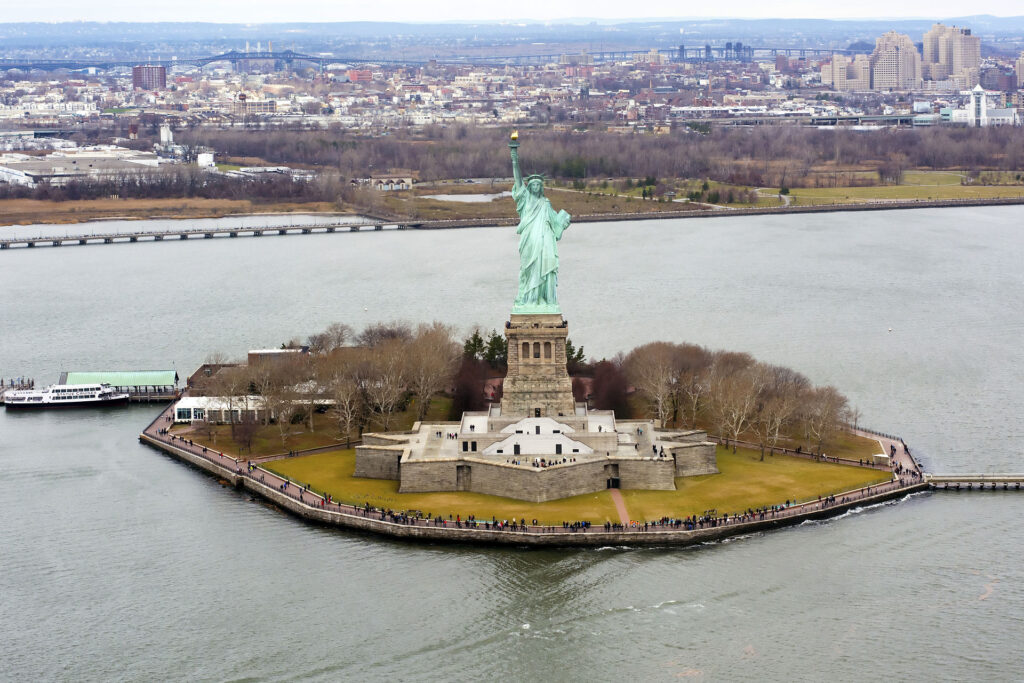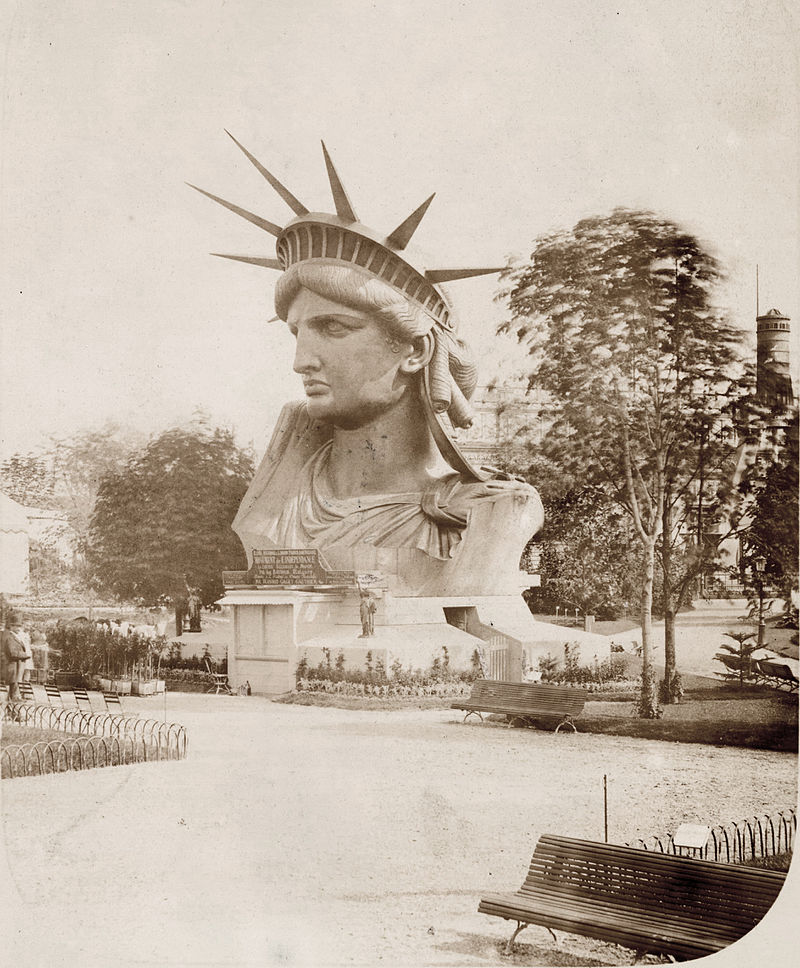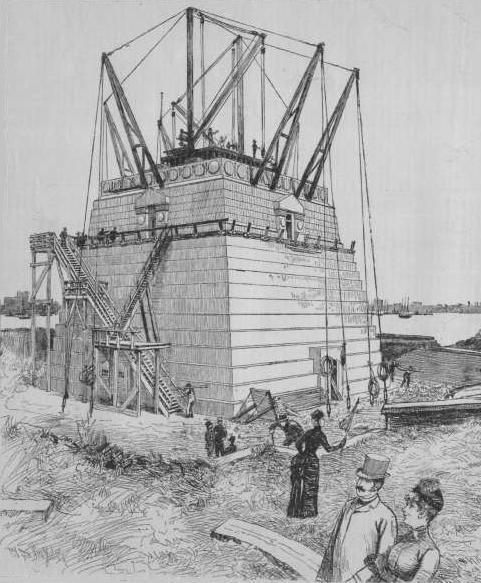More than 130 years ago, the cornerstone of an enduring American symbol, the Statue of Liberty, was laid. Today, approximately 3.5 million people visit this landmark annually, celebrating the foundational ideals of the United States: liberty, justice, and equality for all. The statue remains one of the most recognizable structures in the world, serving as an inspiration to those pursuing these American principles. Many might not know that the story of the Statue of Liberty, from conception to construction, was written by Freemasons.

Origins
The legacy of Lady Liberty can be traced back to the American Revolutionary War, when France helped colonial Americans fight for independence from England. It began a centuries-old alliance that remains strong to this day. In 1865, nearly 100 years after the revolution, Freemason and French political thinker Edouard de Laboulaye wanted to gift the United States a monument to commemorate the relationship between the two nations and celebrate the U.S. centennial. However, as France endured the Franco-Prussian War, Brother Laboulaye was forced to table his idea until the conflict subsided.
Following the war, Laboulaye, a member of Lodge Alsace Lorraine in Paris, resurfaced the concept, proposing the French government finance the statue. At the same time, the United States would take responsibility for the pedestal, including determining the site and finding the funds. In 1871, Brother Laboulaye commissioned fellow Freemason Brother Frederic Auguste Bartholdi to sculpt the figure. Thus began a 30-year journey to complete the historic structure.
Later that year, Bartholdi sailed to America for a celebration on July 4, 1876, the 100th anniversary of the Declaration of Independence. As his voyage entered New York Harbor, Bartholdi had his first vision of the Statue of Liberty: a goddess holding a torch in one hand, welcoming visitors to the land of freedom and opportunity.
Constructing a Colossus
While Bartholdi’s vision was awe-inspiring, coming up with the funds to create such a marvel was not easy. After returning to France, Bartholdi set to work raising 3.5 million French francs with a great deal of help from fellow Freemasons. Contracted to assist on the project was the French engineer Gustave Eiffel, a Mason best known for designing the Eiffel Tower. He developed the framework of the statue, enlisting Freemason laborers from the Franco-American Union.
Meanwhile, back in the United States, work had begun on the pedestal. Gen. W. T. Sherman oversaw selecting the site for the statue, and he chose Bedloe’s Island in New York Harbor at the request of Bartholdi. Congress set aside the land, and Gen. Charles P. Stone was appointed chief engineer of the pedestal construction project. Located in the center of old Fort Wood, an 11-pointed star-shaped fort, work on the foundation began in 1883. It was an extraordinarily difficult project due to the bombproof masonry used to build the fort.

Laying the Cornerstone
On August 5, 1884, the cornerstone of the pedestal was laid with ceremony by William A. Brodie, Grand Master of Masons in the State of New York. Ever since George Washington laid the cornerstone of the United States Capitol, it had been an American tradition to have a ceremony when laying the cornerstone of significant public and private buildings. Items were specially chosen and placed in a time capsule below the cornerstone. These memorabilia included: a copy of the United States Constitution, George Washington’s Farewell Address; 20 bronze medals of presidents through Chester A. Arthur (many of whom were Freemasons), copies of New York City newspapers, a portrait of Bartholdi, a copy of ‘Poem on Liberty’ by E. R. Johnes; and a list on parchment of the Grand Lodge officers.
The ceremony was attended by fellow grand lodge members, military officers, and representatives of the United States and French governments. Less than a year after laying the cornerstone, the pedestal was completed and today remains one of the heaviest pieces of masonry ever built, reaching 89-feet above its foundation.
Liberty Enlightening the World
After nearly ten years of work, France completed the statue in 1885. Once ready, it was dismantled into 350 pieces and shipped to Bedloe’s Island (now renamed Liberty Island) for reconstruction. The rebuild took 15 months, and once atop its pedestal, the Statue of Liberty, formally named Liberty Enlightening the World, stood 305 feet tall. The project required 125 tons of steel, 80 tons of copper sheeting, and 300,000 rivets to hold it together.

Standing tall on Liberty Island, the monument was dedicated on October 28, 1886, in a ceremony led by President Grover Cleveland. Another Freemason, Chauncey Depew, a United States senator, provided the primary address for the service. It is said the whole of New York City was jubilant that day as the American people and their French allies celebrated this new symbol of democracy. For Freemasons across the globe, it remains a source of pride that our brethren were instrumental in creating this masterpiece. Without the ingenuity, dedication, loyalty, and brilliance of countless brethren, this emblem of freedom would not be standing in New York Harbor today.